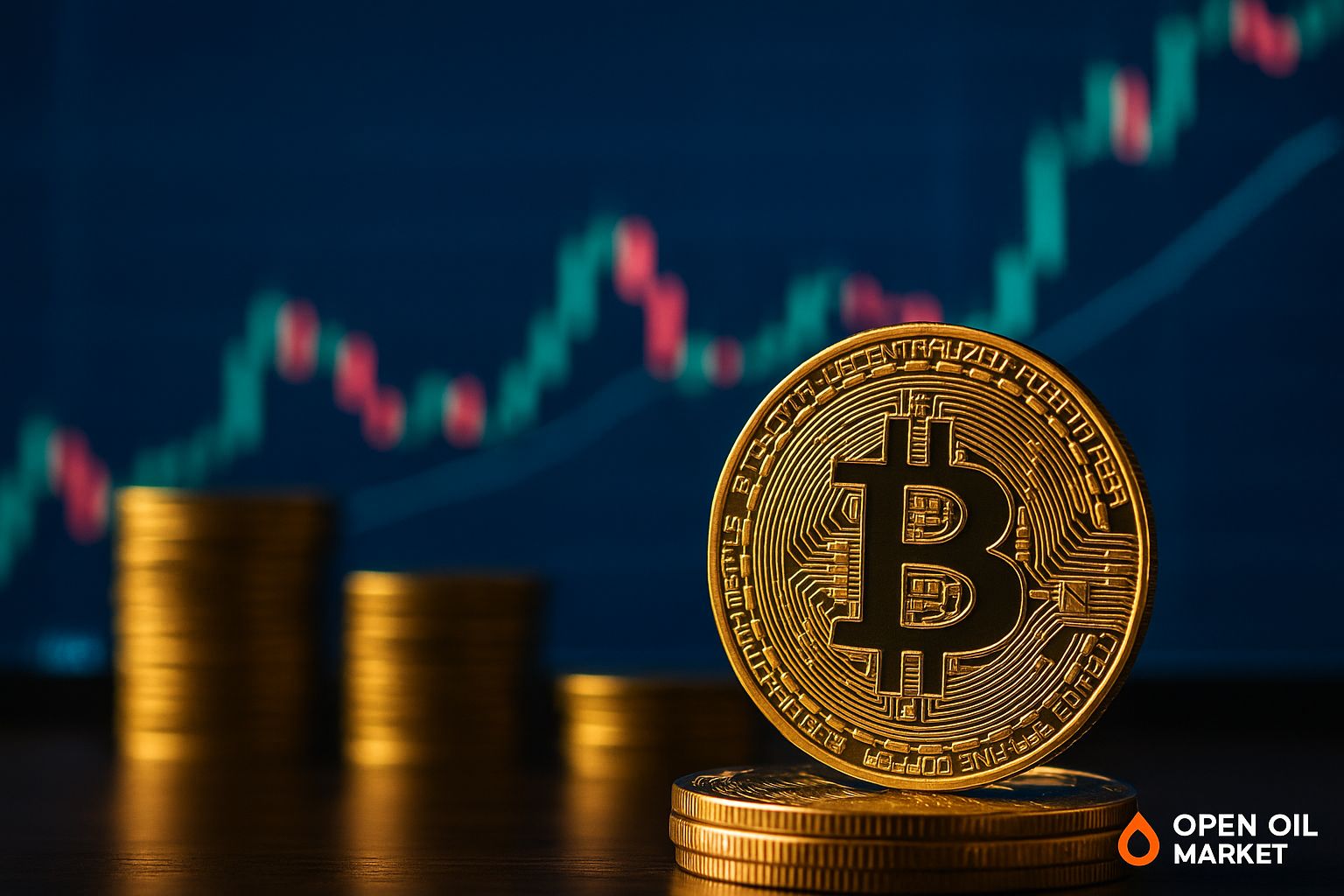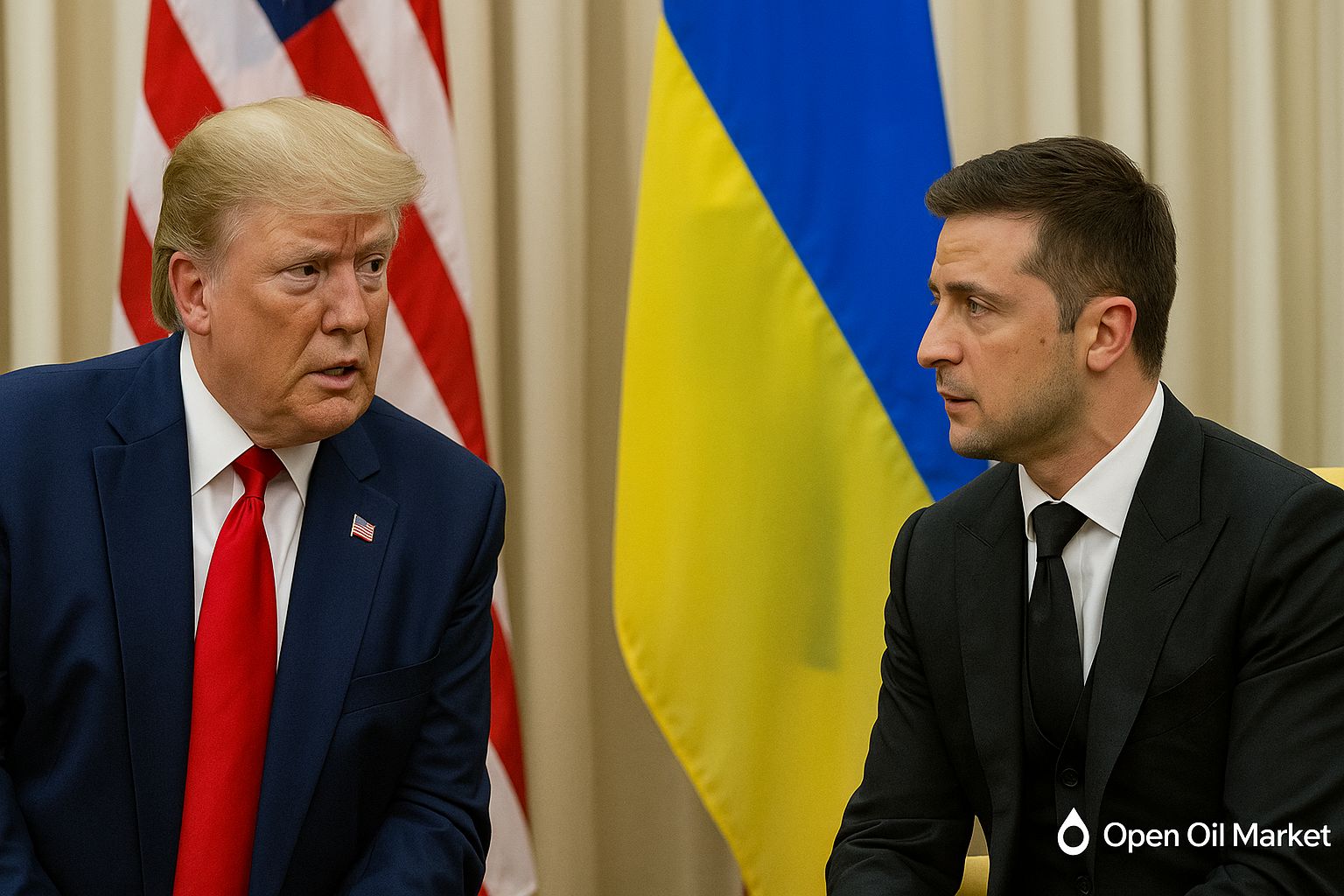
Current News on Startups and Venture Investments as of August 19, 2025: Mega Funds, New IPOs, M&A Deals, Rise of Unicorns, and Development of the Venture Market in the CIS and Worldwide. Analytics for Venture Investors and Funds.
By mid-August 2025, the global venture capital market is demonstrating a steady recovery after a prolonged downturn. Investors around the world are again actively financing technology startups: record-breaking deals are being made, and IPO plans are once again at the forefront. Major funds and corporations have resumed large-scale investments, initiating new venture programs, while governments in various countries are increasing support for innovative businesses, striving not to fall behind in the global technology race.
Analysts estimate that the first half of 2025 was the most successful since 2021 in terms of total venture investments. In the United States and Canada alone, startups attracted approximately $145 billion during this period (+43% year-on-year) — the highest semi-annual figure in the last three years. The total influx of capital into the venture market has significantly increased, largely due to a series of mega deals in the artificial intelligence sector.
Venture activity now spans all regions — from Silicon Valley and Europe to Asia, the Middle East, Africa, and Latin America. The dynamics are particularly strong in North America (accounting for up to 70% of global investments, with a significant portion going into the AI sector) and in the Middle East (where investment in startups reached ~$2.1 billion in the first half of 2025, up 134% year-on-year). Europe is witnessing a reshaping of the landscape: Germany has surpassed the UK in the volume of venture investments for the first time in a decade, reflecting a strengthening of continental startup ecosystems.
In Asia, the situation is mixed: startup funding in China remains weak (with a regional decline of about 33% over the year), while India, Israel, Southeast Asia, and the Persian Gulf countries are showing growth and attracting increasing capital. Even local markets (such as CIS countries) are trying to seize their wave of revival despite external constraints. In general, a new global venture boom is forming, although investors are still approaching deals selectively and cautiously.
Below are the key events and trends shaping the current agenda of the venture market as of August 19, 2025:
- Return of Mega Funds and Major Investors. Leading players are forming record venture funds and increasing their investments, once again saturating the market with capital and enhancing the risk appetite.
- Mega Funding Rounds and New Unicorns. Unprecedented funding volumes are driving startup valuations to record levels, particularly in the field of artificial intelligence.
- Revival of the IPO Market. The successful public listings of technology companies and new applications confirm that the long-awaited "window" for exits remains open.
- Diversification of Sector Focus. Venture capital is being directed not only into AI but also into fintech, climate projects, biotechnology, defense, and even crypto startups, broadening market horizons.
- Wave of Consolidation and M&A Deals. Major mergers, acquisitions, and strategic investments are reshaping the industry landscape, creating new opportunities for exits and scaling companies.
- Global Expansion of Venture Capital. The investment boom is spreading to new regions — from the Persian Gulf countries and South Asia to Africa and Latin America — forming their own technology ecosystems.
- Local Focus: Russia and the CIS. Despite constraints, new funds and initiatives are emerging to develop local startup ecosystems, increasing investors' interest in the region.
The Return of Mega Funds: Big Money Back in the Market
The largest investment players are triumphantly returning to the venture arena, signaling a new appetite for risk. The Japanese conglomerate SoftBank has reemerged after a period of quiet, announcing the formation of Vision Fund III with a volume of ~$40 billion, focused on advanced technologies (primarily artificial intelligence and robotics). At the same time, sovereign funds from the Persian Gulf countries have become more active: they are pouring billions of dollars into innovative projects and developing state mega programs for the startup sector, establishing their own tech hubs in the Middle East. Additionally, a multitude of new venture funds is emerging worldwide, attracting significant institutional capital for investments in high-tech sectors.
Renowned Silicon Valley firms are also increasing their presence. In the U.S. venture sector, funds have amassed unprecedented reserves of uninvested capital (“dry powder”) — hundreds of billions of dollars ready to be deployed as confidence returns to the market. For example, Andreessen Horowitz announced the gathering of a new mega fund of around $20 billion, entirely focused on investments in AI companies — a record for the industry. This influx of “big money” is filling the startup market with liquidity, providing resources for new rounds and supporting the growth of promising companies. The return of mega funds and major institutional investors not only intensifies competition for the best deals but also instills confidence in the industry regarding future capital inflows.
Mega Funding Rounds and New Unicorns: Investments Hit Records
The artificial intelligence sector continues to be the main engine of the current venture upturn, demonstrating record funding volumes. Investors are directing colossal resources into the most promising projects, driving startup valuations to unprecedented heights.
For instance, Elon Musk's startup xAI has raised approximately $10 billion (including venture and debt financing) and reached a valuation of about $100 billion, entering the ranks of the most valuable AI companies in the world. Meanwhile, OpenAI received another tranche of about $8 billion at a valuation of approximately $300 billion — both of these mega-rounds were substantially oversubscribed, highlighting the excitement around industry leaders. Other players are not lagging: the Canadian AI startup Cohere raised $500 million in August at a valuation of ~$6.8 billion, confirming its status as a unicorn and investors' interest in new contenders.
The current investment boom is generating a new wave of unicorns. According to some estimates, over 1,300 AI startups are currently valued at least at $100 million, with several dozen exceeding the $1 billion mark. Although experts warn of overheating risks, the appetite for AI projects among investors remains undiminished.
IPO Market Revives: Window of Opportunities for Exits
The global market for initial public offerings (IPOs) has confidently revived after a prolonged lull and continues to gain momentum. In Asia, a new wave of IPOs has been initiated by Hong Kong: in recent weeks, several major technology companies have successfully gone public, collectively raising billions of dollars. For example, one of the leaders in the battery industry listed shares worth about $5 billion, demonstrating that investors in the region are once again ready to actively participate in public offerings.
The situation in the U.S. IPO market has also improved significantly. The fintech unicorn Chime debuted on the stock exchange this summer, with its shares rising approximately 30% on the first day of trading. Following it, the design platform Figma conducted its IPO, attracting about $1.2 billion at an estimated value of $15–20 billion; its shares also increased steadily in the early days. In the second half of 2025, other well-known startups are preparing for public market entry — among them, the payment service Stripe and several highly valued companies from the AI and SaaS sectors.
Even the crypto industry is keen to take advantage of the open “window”: the fintech company Circle successfully went public, and the cryptocurrency exchange Bullish filed for a listing in the U.S. with a target valuation of around $4 billion. The resurgence of activity in the IPO market is crucial for the venture ecosystem: successful public exits allow funds to realize profitable exits and redirect freed capital to new projects, thus supporting further industry growth.
Diversification of Investments: Fintech, Climate, Biotech, and Other Sectors on the Rise
In 2025, venture investments are covering an increasingly broad range of industries and are no longer limited to AI alone. Following last year's downturn, there has been a notable revival in fintech: significant funding rounds are occurring not only in the U.S. but also in Europe and emerging markets, fueling the growth of new financial services. Simultaneously, interest in climate and “green” technologies is rising — these sectors are attracting record investments amid the global trend towards sustainability.
Appetite for biotechnology is also returning: the emergence of promising medical developments and online platforms in healthcare is once again attracting capital as the industry emerges from a period of declining valuations. In addition, amid increased attention to security, investors are more actively supporting defense and aerospace projects — for example, the American startup Anduril raised $2.5 billion, doubling its valuation to ~$30 billion. A partial recovery of trust in the crypto market is also noticeable: some blockchain startups have begun to receive funding again. As a result, the expansion of sector focus makes the startup ecosystem more resilient and reduces the risk of overheating in individual segments.
Consolidation and M&A Deals: Consolidating Players
Elevated startup valuations and fierce competition for markets are pushing the industry towards consolidation. Major mergers and acquisitions are back in the spotlight, reshaping the balance of power in the technology sector. For instance, Google has agreed to acquire the Israeli cybersecurity startup Wiz for approximately $32 billion — a record sum for the Israeli tech industry. Another example is the American startup Lyten acquiring key assets from the bankrupt European battery manufacturer Northvolt, effectively turning into one of the largest players in the battery segment in Europe.
Such mega-deals demonstrate the desire of tech giants (and not only them) to acquire key developments and talents. Overall, the current surge in M&A activity and venture deals indicates market maturation: mature startups are merging with each other or becoming acquisition targets for corporations, while venture investors are finally getting the opportunity for long-awaited profitable exits. The wave of M&A deals opens new pathways for capital exits, allowing funds to lock in profits and contributing to the emergence of larger companies capable of successfully competing on a global level.
Global Expansion of Venture Capital: New Markets Gaining Strength
The 2025 venture boom is acquiring a truly global scale, encompassing markets that were recently on the periphery of the technology scene. The Middle East, for instance, is forming its own tech hubs: the Persian Gulf countries are actively financing local startups and attracting international capital into their ecosystems. South Asia is also experiencing an upswing: India and Southeast Asian countries are recording record inflows of venture capital and growth in the number of unicorns. Their own startup clusters are rapidly developing in Africa and Latin America — from fintech centers in Nigeria to e-commerce successes in Brazil.
Major venture funds are now closely monitoring promising projects around the world — from Singapore and Dubai to Nairobi and São Paulo, striving not to miss the next “diamond” of the tech scene. Founders from various countries are gaining unprecedented opportunities for capital attraction, and the venture market is becoming increasingly international. New funds, accelerators, and support programs focused on developing local ecosystems are being launched in different regions. Thus, the investment boom is spreading to new territories, integrating them into the global innovative economy.
Russia and the CIS: Local Initiatives Amid Global Trends
Despite external restrictions, active steps are being taken in Russia and neighboring countries to develop their own startup ecosystems in line with global trends. At the St. Petersburg International Economic Forum (SPIEF-2025), a new venture fund was announced, involving the state bank PSB with a target volume of around 12 billion rubles for investment in dual-use projects — from drones and AI to robotics. PSB serves as the anchor investor for this fund, also attracting private capital; even under sanctions, the market seeks opportunities to finance priority technologies and grow its own unicorns.
Simultaneously, some regional startups are reaching new levels. For example, the Krasnodar food tech project Qummy raised ~440 million rubles at a valuation of around 2.4 billion rubles, preparing for an IPO — this case demonstrates the seriousness of the technological business ambitions in the Russian regions. In Kazakhstan, the state fund Qazaqstan Venture Group has been established with a volume of $1 billion to support AI startups and a new wave of tech projects. Additionally, in July 2025, Russian authorities eased restrictions for foreign investors: they are once again allowed to acquire shares of Russian companies and freely repatriate capital. This move is aimed at stimulating international investment in the economy and the venture sector, despite the geopolitical situation.
Emigrants from the CIS countries are already achieving global success, integrating into the world industry. For example, the AI startup Perplexity (founded by a Belarusian entrepreneur and based in the U.S.) recently secured an additional ~$100 million, bringing its valuation to ~$18 billion. Another example is the Dubai project Xpanceo, founded by a Russian and a Ukrainian: it raised about $250 million in a series A round at a valuation of $1.3 billion for the development of “smart” AR contact lenses. These cases confirm that innovative projects with roots in the region can compete on the cutting edge of the global technology arena.
While the scope of the venture market in the CIS is still modest compared to the West, the foundation for future growth is being laid. Investors are shifting their focus to more mature projects with proven business models, while the government is expanding support — from the development of IT education to the creation of a network of regional accelerators. Local startups are striving to enter global value chains, relying on strong competencies in high-tech niches (AI, big data, cybersecurity, etc.). Despite all the challenges, Russia and its neighbors are gradually building their venture landscape, hoping to eventually take their rightful place in the global technology race.
Conclusion: Cautious Optimism and Quality Growth Priorities
By the end of summer 2025, the sentiment in the venture industry remains cautiously optimistic. Record deals and successful IPOs instill confidence that the bottom of the recent downturn has been crossed; however, the lessons of past years hold the market back from excessive euphoria. Investors are now paying much closer attention to the quality of startup growth and their ability to build sustainable businesses, favoring companies with a proven business model and approaching profitability metrics.
The significant capital influx into the fields of AI, fintech, and cybersecurity enhances faith in the industry’s further development. At the same time, funds are paying increased attention to risk diversification and a measured approach to valuations. With a favorable macroeconomic environment, the market may accelerate its growth in the second half of the year. For this to happen, it is essential to combine local potential (talents and projects from different countries) with access to global markets.
Overall, the news about startups and venture investments as of mid-August 2025 reflects the heightened interest in innovations coupled with a pragmatic investment approach. Venture funds and entrepreneurs demonstrate a willingness to collaborate: the former provide capital to promising projects, while the latter demonstrate real progress in technology development. The current situation allows for cautiously optimistic prospects for the future, anticipating new technological breakthroughs and continued venture upturn.




